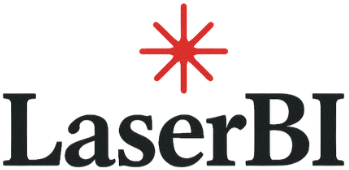In the fast-evolving world of digital marketing, making data-driven decisions has become both an expectation and a necessity. With the explosion of marketing channels, customer touchpoints, and campaign types, it’s easy to become overwhelmed by the sheer volume of available data. That’s where artificial intelligence (AI) steps in—not only simplifying data collection and analysis but also revealing deeper insights faster than ever before.
One of the most important steps to success in marketing analytics is choosing and consistently tracking the right Key Performance Indicators (KPIs). In 2025, modern marketing teams are leveraging AI-powered tools to measure what matters, automate reporting, and surface opportunities that human analysts might miss. But with so many metrics to choose from, which KPIs should your team focus on to maximize impact?
In this in-depth guide, we’ll explore the top KPIs every marketing team should track with AI tools, why they matter, and how AI transforms the way you analyze and act on your data.
The New Age of Marketing Analytics: Why AI Is a Game-Changer
Traditional marketing analytics required manual data gathering, time-consuming spreadsheet work, and basic dashboard tools. While these methods still have value, the reality is that today’s marketers are bombarded by real-time data from social media, web analytics, ad platforms, email campaigns, CRMs, and more. The complexity and speed at which data is generated demand a smarter approach.
AI-driven marketing analytics tools (like LaserBI and other modern platforms) change the game by:
- Automating data integration from all major channels
- Surfacing actionable insights, anomalies, and optimization opportunities in real time
- Using predictive analytics and natural language queries to make deep analysis accessible to every team member
With AI, marketing teams can shift from simply reporting on the past to predicting the future and prescribing actions.
What Are KPIs in Marketing—and Why Are They Critical?
A Key Performance Indicator (KPI) is a quantifiable metric that measures the success of a particular business objective. In marketing, KPIs keep your team focused on what truly matters: results that drive revenue, growth, and customer engagement.
However, tracking the wrong KPIs—or tracking too many—can lead to “analysis paralysis.” AI helps solve this by highlighting the most meaningful metrics based on your goals, historical performance, and current market dynamics.
The 12 Essential KPIs Every Marketing Team Should Track With AI Tools
Let’s dive into the most impactful KPIs for marketing teams, along with how AI can enhance your understanding and execution.
1. Customer Acquisition Cost (CAC)
Definition:
The average cost required to acquire a new customer, including ad spend, content creation, and marketing team expenses.
Why It Matters:
Tracking CAC ensures you’re spending efficiently and not overpaying for growth. AI can help optimize campaigns in real-time to lower CAC.
AI in Action:
AI tools can automatically compare CAC across channels, segments, and campaigns, flagging when costs spike and recommending reallocations.
2. Customer Lifetime Value (CLV or LTV)
Definition:
The projected total revenue a customer will generate over their entire relationship with your company.
Why It Matters:
High LTV customers are your best source of long-term growth. Balancing CAC with LTV ensures sustainable marketing ROI.
AI in Action:
Predictive models analyze purchase history, churn risk, and engagement patterns to estimate LTV and guide retargeting or upsell strategies.
3. Return on Ad Spend (ROAS)
Definition:
Revenue generated for every dollar spent on advertising.
Why It Matters:
ROAS is the gold standard for paid media performance. Tracking it closely lets you invest more in what works and cut wasteful spend.
AI in Action:
AI platforms continuously monitor ROAS at the campaign, ad set, and even creative level, suggesting optimizations and reallocating budgets for maximum efficiency.
4. Conversion Rate
Definition:
The percentage of visitors who complete a desired action, such as filling out a form, signing up, or making a purchase.
Why It Matters:
Improving conversion rates has a direct impact on your bottom line. It’s also a key indicator of campaign and landing page effectiveness.
AI in Action:
AI tools test multiple versions of landing pages, creative assets, and CTAs (calls-to-action), identifying top performers and personalizing experiences for different audiences.
5. Lead Quality Score
Definition:
A numerical or categorical score representing how likely a lead is to convert to a customer.
Why It Matters:
Not all leads are equal. Focusing on high-quality leads improves sales outcomes and resource allocation.
AI in Action:
AI-powered lead scoring models analyze data from multiple touchpoints—website behavior, email engagement, demographic info—to score and prioritize leads in real time.
6. Website Traffic & Traffic Sources
Definition:
Total visits to your website and the breakdown of those visits by source (organic, paid, referral, direct, social, etc.).
Why It Matters:
Knowing where your audience comes from helps you invest in the most effective channels and uncover new growth opportunities.
AI in Action:
AI tracks changes in traffic patterns, predicts seasonal fluctuations, and alerts you to sudden drops or surges that may require attention.
7. Engagement Rate (Social & Content)
Definition:
Measures how actively your audience interacts with your content—likes, shares, comments, clicks, and time on page.
Why It Matters:
Engaged audiences are more likely to convert. Tracking engagement helps refine content strategy and improve brand loyalty.
AI in Action:
AI analyzes which topics, formats, and channels generate the highest engagement, then recommends new content ideas and distribution timing.
8. Email Open Rate & Click-Through Rate (CTR)
Definition:
Open rate: percentage of recipients who open an email.
CTR: percentage of recipients who click on links within the email.
Why It Matters:
Email remains a cornerstone of digital marketing. Strong open and click rates indicate effective messaging and audience targeting.
AI in Action:
AI tools personalize subject lines, send times, and content blocks to boost engagement, and even segment lists based on predicted behaviors.
9. Funnel Drop-Off Rate
Definition:
The percentage of prospects who abandon your funnel at each stage (e.g., from landing page to checkout).
Why It Matters:
Identifying and fixing high drop-off points can significantly improve overall conversions.
AI in Action:
AI maps user journeys, detects friction points, and can automatically trigger retargeting ads or personalized messages to re-engage users.
10. Brand Share of Voice (SOV)
Definition:
Your brand’s presence and visibility compared to competitors, measured across channels (social, search, PR, etc.).
Why It Matters:
SOV correlates with market share and brand health. Tracking it helps you understand your position and competitive threats.
AI in Action:
AI-driven sentiment and SOV analysis monitor your brand and competitors in real time, surfacing PR risks or opportunities instantly.
11. Customer Satisfaction Score (CSAT) & Net Promoter Score (NPS)
Definition:
CSAT: Measures customer satisfaction with your product/service.
NPS: Measures customer loyalty and likelihood to recommend.
Why It Matters:
These scores guide retention strategies and are predictive of churn and advocacy.
AI in Action:
AI surveys analyze open-ended feedback for sentiment, spot trends, and trigger alerts if satisfaction drops.
12. Marketing Qualified Leads (MQLs) & Sales Qualified Leads (SQLs)
Definition:
MQLs: Leads considered more likely to become customers based on marketing engagement.
SQLs: Leads vetted by sales as ready for follow-up.
Why It Matters:
Tracking these metrics aligns marketing and sales teams, shortens sales cycles, and improves revenue predictability.
AI in Action:
AI monitors prospect engagement across channels, automatically updating MQL/SQL status and syncing with CRM systems for instant handoff.
How AI Tools Transform KPI Tracking
Now that we’ve covered which KPIs to prioritize, let’s look at how AI fundamentally enhances your ability to track and optimize them.
Automated Data Integration
AI platforms connect to every major marketing, sales, and analytics tool—Google Analytics, Facebook Ads, HubSpot, Salesforce, and more—pulling data into a unified dashboard. This eliminates manual reporting and ensures you’re always working with up-to-date information.
Real-Time Alerts and Anomaly Detection
AI monitors your KPIs 24/7, alerting you to significant changes (e.g., a sudden drop in ROAS or spike in CAC). Instead of reacting late, your team can investigate and take action in real time.
Predictive Analytics & Forecasting
AI doesn’t just describe the present—it forecasts the future. Predictive models use historical and real-time data to estimate future results, from sales to website traffic to customer churn. This empowers marketing teams to be proactive, not just reactive.
Natural Language Queries
AI-powered BI tools like LaserBI let anyone on the team ask, “How did our last campaign impact MQLs?” or “Which source is driving the lowest CAC?” and receive instant answers—in text, charts, or even voice responses.
Personalized Dashboards and Insights
With AI, dashboards can be customized for each team member, surfacing KPIs and insights relevant to their role. Executives see big-picture metrics, while campaign managers can drill down into granular data.
Best Practices for Setting and Reviewing KPIs
To maximize value from AI-driven marketing analytics, follow these best practices:
- Align KPIs with Business Goals:
Ensure every metric you track ties directly to a revenue, growth, or customer objective. - Review Regularly:
Don’t set KPIs and forget them—schedule regular reviews to assess progress, adjust targets, and refine what you measure. - Automate Reporting:
Use AI tools to deliver weekly or monthly KPI reports automatically, freeing your team from manual compilation. - Empower the Whole Team:
Give all relevant team members access to real-time KPI dashboards and insights. - Iterate and Improve:
Let AI surface new, relevant KPIs over time as your business and market evolve.
Why LaserBI Is the Ultimate AI-Powered KPI Platform
LaserBI is built to empower marketing teams with instant, AI-powered analytics and KPI tracking. Using LaserBI, you can:
- Connect all your data sources in minutes
- Ask complex marketing questions in plain English or by voice
- Receive instant, actionable insights and anomaly alerts
- Personalize dashboards for every team member
- Monitor KPIs across campaigns, channels, and customer segments with ease
Whether you’re a startup or an enterprise, LaserBI takes the guesswork out of marketing analytics, helping you maximize ROI and drive smarter growth.
Final Thoughts
Tracking the right marketing KPIs is essential to building campaigns that deliver real results. With the power of AI, marketing teams can move beyond surface-level metrics and gain true insight into what’s driving success.
If you’re ready to transform your marketing analytics and focus on what matters, consider adopting an AI-powered platform like LaserBI. You’ll save time, uncover opportunities, and give your team the confidence to make data-driven decisions—every day.


0 Comments